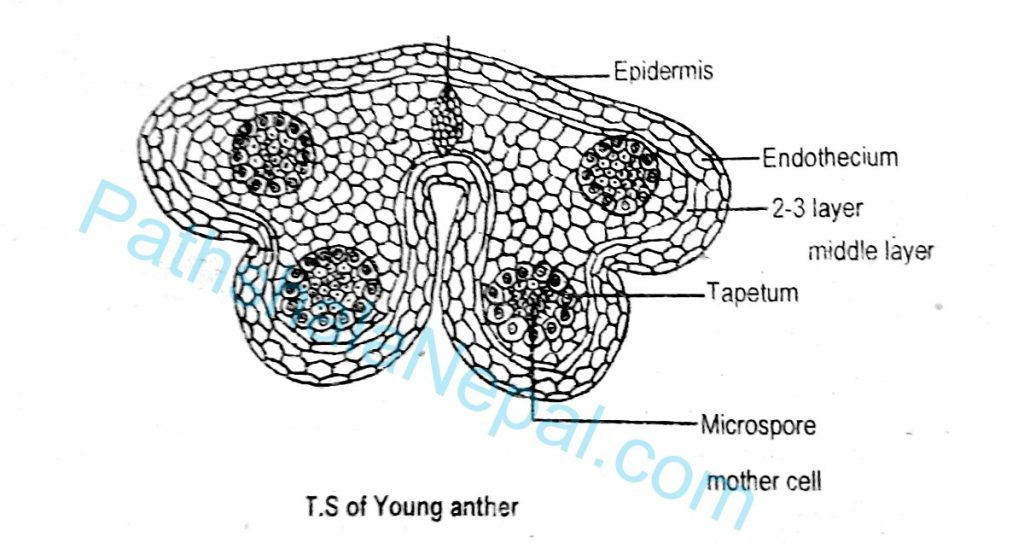Explain the process of microsporogenesis with a suitable diagram.
1 Answer
The formation of microspores or pollen grain within an anther is called microsporogenesis or Microgametogenesis. A typical anther is a bilobed structure. The young anther contains a homogeneous mass of meristematic cells. During developments, it assumes a four-lobed structure. Few cells of hypodermis at each lobe become more distinct than others due to larger size, distinct nucleus, and dense cytoplasm. Such cells are called archesporial cells. These cells are divided periclinal (used to describe a type of cell division in a layer of cells that occurs parallel to an adjacent layer of cells) into two layers outer primary parietal layer and the inner primary sporogenous layer. The primary parietal layer divides periclinal as well as anticlinal ( used to describe a type of cell division in a layer of cells that occurs perpendicular to the adjacent layer of cells) to form 2-5 concentric layers of anther wall which includes the epidermis, endothecium, middle layers, and tapetum.
The primary sporogenous layer either directly functions as a microspore mother cell or undergoes one or more mitotic divisions to form microspore mother cells. Microspore mother cells divide meiotically into 4 haploid microspores. The aggregation of 4 microspores is called microspore tetrad. Separated microspores are called pollen grains. Each pollen grain has two walls outer thick exine and inner thin intine. It contains a haploid nucleus with some cytoplasm. Exine at some points is thinner such points are called germ pores. Microspore or pollen grain represents the beginning of the male gametophyte. Pollen grains are of various shapes but commonly they are globular. They are male gametophyte. Pollen grains are of various shapes but commonly they are globular. They are unicellular uninucleated with two-layered walls. The outer layer is called exine and made up of had polymer of carotenoids (sporopollenin). The inner layer is called intine which made up of cellulose and pectin.


